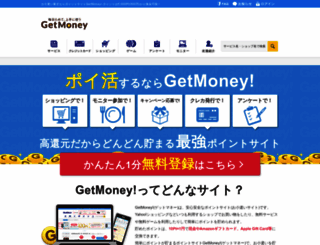ポイントサイトでお小遣い稼ぎするならGetMoney!
Page Load Speed
11.6 sec in total
First Response
460 ms
Resources Loaded
10.9 sec
Page Rendered
296 ms

About Website
Welcome to dietnavi.com homepage info - get ready to check Dietnavi best content for Japan right away, or after learning these important things about dietnavi.com
ポイントサイトのGetMoney!は登録無料でショッピングやクレジットカード発行で貯めたポイントを現金やAmazonギフトカード、Apple Gift Card等に交換できるお得なサービスです。ためたポイントは「10ポイント=1円」で交換できます。
Visit dietnavi.comKey Findings
We analyzed Dietnavi.com page load time and found that the first response time was 460 ms and then it took 11.2 sec to load all DOM resources and completely render a web page. This is a poor result, as 90% of websites can load faster.